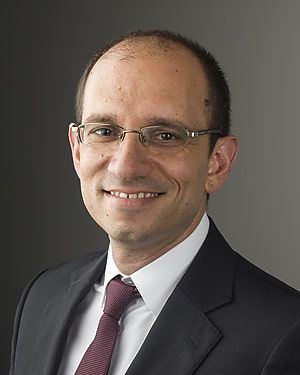Article
Risk of Stroke Rises Following a Transient Ischemic Attack
Author(s):
More than 20% of TIA patients suffered a stroke within 7 days following the baseline attack.
Vasileios-Arsenios Lioutas, MD

Clinicians do not entirely know the association between transient ischemic attacks (TIA) and the subsequent risk of strokes.
A team, led by Vasileios-Arsenios Liotas, MD, Department of Neurology, Beth Israel Deaconess Medical Center, Harvard Medical School, identified the population-based incidence of TIA and the timing and long-term trends of stroke risk following the ischemic attack.
In the retrospective cohort study—dubbed the Framingham Heart Study—the investigators prospectively collected the data from 14,059 individuals with no history of TIA or stroke at baseline. The information was followed up from 1948-2017 and a sample of TIA-free participants was used to match with participants with their first incident TIA on age and sex at a 5:1 ratio.
Study Parameters
The investigators sought main outcomes of TIA incidence rates, stroke following TIA compared to stroke among the matched control patient group, and time trends of stroke risk at 90 days after TIA assessed in 3 epochs—1954-1985, 1986-1999, and 2000-2017.
Of the patients included in the study, 435 individuals experienced a TIA. The mean age of this subgroup was 73.47 years old and 229 of the 435 participants were women. This group was also matched to 2175 control participants.
The estimated incidence rate of TIA was 1.19 per 100 person-years and over a median of 8.86 follow-up years after a TIA, 130 patients (29.5%) suffered a stroke, 28 (21.5%) of which occurred within 7 days.
In addition, 40 (30.8%) occurred within 30 days, 51 (39.2%) occurred within 90 days, and 63 (48.5%) occurred more than 1 year after the index TIA.
The median time to stroke was 1.64 (interquartile range, 0.07-6.6) years and the age- and sex-adjusted cumulative 10-year hazard of incident stroke for the target group (130 strokes among 435 cases) was 0.46 (95% CI, 039-0.55).
Risk of Strokes
For the matched control the age- and sex-adjusted cumulative 10-year hazard of incident stroke (165 strokes among 2175 cases) was 0.46 (95% CI, 0.08-0.11; fully adjusted HR, 4.37; 95% CI, 3.30-5.71; P <0 .001).
Compared with the 90-day stroke risk following an attack in 1948-1985 (16.7%; 26 strokes among 155 patients with TIA), the risk between 1986-1999 was 11.1% (18 strokes among 162 patients) and between 2000-2017 was 5.9% (7 strokes among 118 patients).
The HR for the 90-day risk of stroke in the second epoch was 0.60 (95% CI, 0.33-1.12) and 0.32 (95% CI, 0.14-0.75) for the third epoch in comparison to the first epoch (P = 0.005 for trend).
“In this population-based cohort study from 1948-2017, the estimated crude TIA incidence was 1.19/1000 person-years, the risk of stroke was significantly greater after TIA compared with matched control participants who did not have TIA, and the risk of stroke after TIA was significantly lower in the most recent epoch from 2000-2017 compared with an earlier period from 1948-1985,” the authors wrote.
The study, “Incidence of Transient Ischemic Attack and Association With Long-term Risk of Stroke,” was published online in JAMA.





